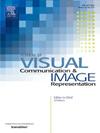Salient object detection enhanced pseudo-labels for weakly supervised semantic segmentation
IF 3.1
4区 计算机科学
Q2 COMPUTER SCIENCE, INFORMATION SYSTEMS
Journal of Visual Communication and Image Representation
Pub Date : 2025-08-14
DOI:10.1016/j.jvcir.2025.104548
引用次数: 0
Abstract
To address the limitations of generating the pseudo-labels based on Class Activation Maps (CAM) in the weakly supervised semantic segmentation tasks, in this paper, we propose a novel salient object fusion framework. This framework complements CAM localization information by capturing the complete contours and the edge details of salient targets through our proposed RGB-SOD network. Also, we design a saliency object selector to dynamically balance the weights of CAM and Salient Object Detection (SOD) when generating the single-class pseudo-labels, further improving the quality of the pseudo-labels. Despite its simplicity, our method achieved competitive performances of 77.52% and 77.73% on the PASCAL VOC 2012 validation and the test sets respectively, significantly enhancing the performance bottlenecks of the SOTA methods. This work highlights the importance of effectively integrating complementary information to improve weakly supervised segmentation tasks. Our source codes are publicly available at https://github.com/UGVly/SOD-For-WSSS.git.
显著目标检测增强弱监督语义分割伪标签
针对弱监督语义分割任务中基于类激活图(Class Activation Maps, CAM)生成伪标签的局限性,提出了一种新的显著对象融合框架。该框架通过我们提出的RGB-SOD网络捕获突出目标的完整轮廓和边缘细节,补充了CAM定位信息。设计了显著性对象选择器,在生成单类伪标签时动态平衡CAM和显著性对象检测(SOD)的权重,进一步提高伪标签的质量。尽管简单,我们的方法在PASCAL VOC 2012验证和测试集上分别获得了77.52%和77.73%的竞争性能,显著改善了SOTA方法的性能瓶颈。这项工作强调了有效整合互补信息以改进弱监督分割任务的重要性。我们的源代码可以在https://github.com/UGVly/SOD-For-WSSS.git上公开获得。
本文章由计算机程序翻译,如有差异,请以英文原文为准。
求助全文
约1分钟内获得全文
求助全文
来源期刊

Journal of Visual Communication and Image Representation
工程技术-计算机:软件工程
CiteScore
5.40
自引率
11.50%
发文量
188
审稿时长
9.9 months
期刊介绍:
The Journal of Visual Communication and Image Representation publishes papers on state-of-the-art visual communication and image representation, with emphasis on novel technologies and theoretical work in this multidisciplinary area of pure and applied research. The field of visual communication and image representation is considered in its broadest sense and covers both digital and analog aspects as well as processing and communication in biological visual systems.
 求助内容:
求助内容: 应助结果提醒方式:
应助结果提醒方式:


